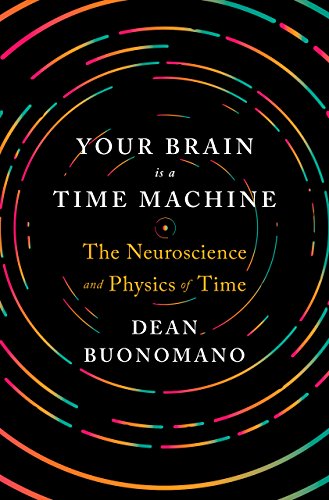 |
Your Brain Is a Time Machine The Neuroscience and Physics of Time
Dean Buonomano
W. W. Norton & Company, first edition, 2017
ISBN: 9780393247947 |
There isn’t much out there on the neuroscience of time, making this entry a welcome addition to the ever growing library of popular science books. It is actually quite remarkable that no one had dared to tread these waters before given how critical time is for brain function. Indeed, one cannot understand how a neuron produces action potentials, how a synapse relays information or how a neural circuit produces even simple behaviors without considering time as an inextricable variable. But then again, studying and understanding time on its own has racked many a learned brain before, so perhaps it is understandable why addressing time in the context of neurobiology was never a popular topic. To be fair, other books on the brain do include the mechanics of time in their discussions of brain function, but rarely do they actually explain how the brain produces, measures and interprets time, and how this circumscribes all brain outputs.
Enter Dean Buonomano. He has taken up this challenge, and being an expert in neurocomputation (which necessitates a deep understanding of temporal processing), he is well poised to expound on the subject. Artfully divided into twelve chapters (appropriately numbered 1:00 – 12:00) this book starts by defining time and moves on to gently weave in the neurobiological elements needed to create a broad picture of how the brain is a bona fide time machine. Although simplified enough to make it palatable to the naïve reader, there are nevertheless a couple of chapters that require slower reading and careful thought given the complexity and abstractness of the subject matter. Namely, Chapter 6 (Time, Neural Dynamics, and Chaos) and Chapter 9 (The Spatialization of Time in Physics), which discuss how neural circuits code temporal patterns and the concept of spacetime, respectively, might frustrate some readers as neither topic is immediately intuitive. Nevertheless, I find the book well written and pleasant to read, and provides a wonderful introduction to this complex topic. The reader is also in for a treat (and maybe a jolt as well) after reading Chapter 12 (Consciousness: Binding the Past and the Future), which elaborates on how the brain produces consciousness and free will. The information provided here will likely make readers see themselves in a completely different and disconcerting light…
